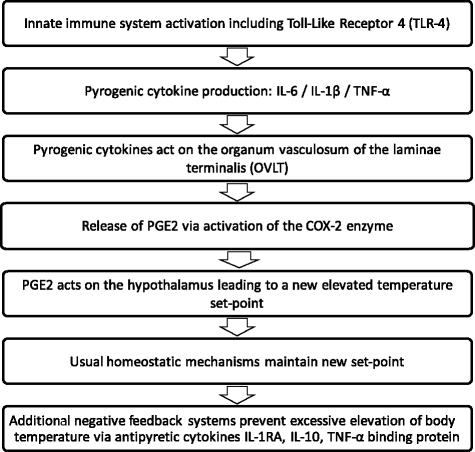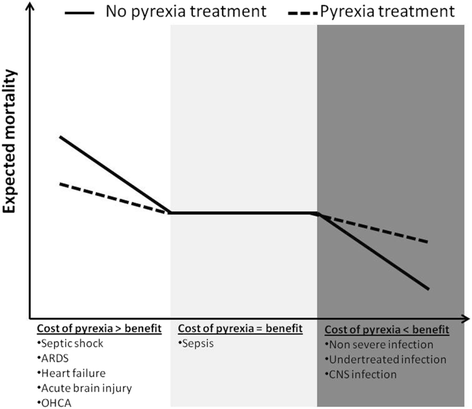Should we treat pyrexia? And how do we do it?
- PMID: 27716372
- PMCID: PMC5047044
- DOI: 10.1186/s13054-016-1467-2
Should we treat pyrexia? And how do we do it?
Abstract
The concept of pyrexia as a protective physiological response to aid in host defence has been challenged with the awareness of the severe metabolic stress induced by pyrexia. The host response to pyrexia varies, however, according to the disease profile and severity and, as such, the management of pyrexia should differ; for example, temperature control is safe and effective in septic shock but remains controversial in sepsis. From the reported findings discussed in this review, treating pyrexia appears to be beneficial in septic shock, out of hospital cardiac arrest and acute brain injury.Multiple therapeutic options are available for managing pyrexia, with precise targeted temperature management now possible. Notably, the use of pharmacotherapy versus surface cooling has not been shown to be advantageous. The importance of avoiding hypothermia in any treatment strategy is not to be understated.Whilst a great deal of progress has been made regarding optimal temperature management in recent years, further studies will be needed to determine which patients would benefit the most from control of pyrexia and by which means this should be implemented. This narrative review is part of a series on the pathophysiology and management of pyrexia.
Figures


References
Publication types
MeSH terms
LinkOut - more resources
Full Text Sources
Other Literature Sources
Medical

